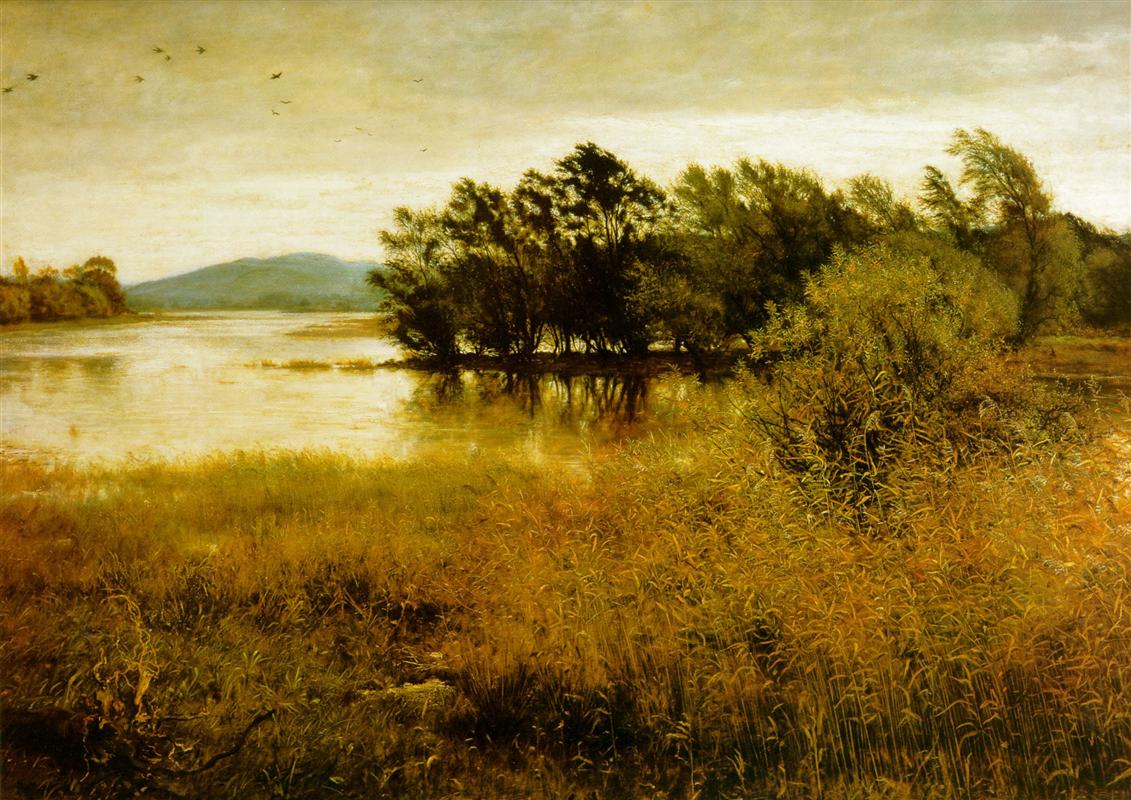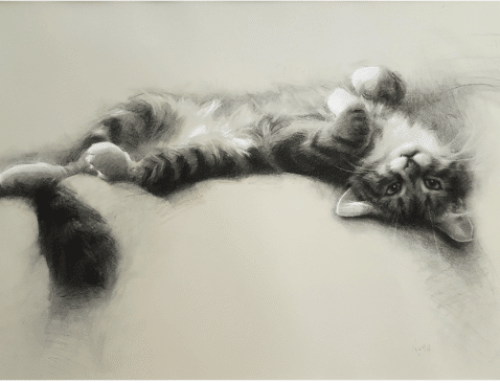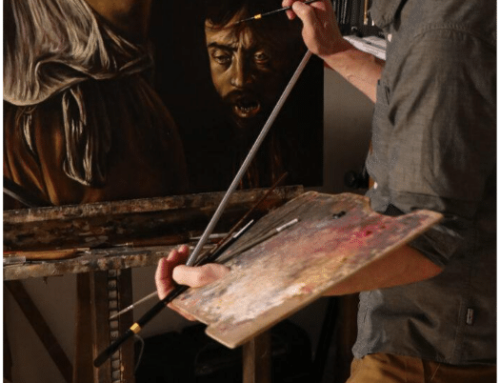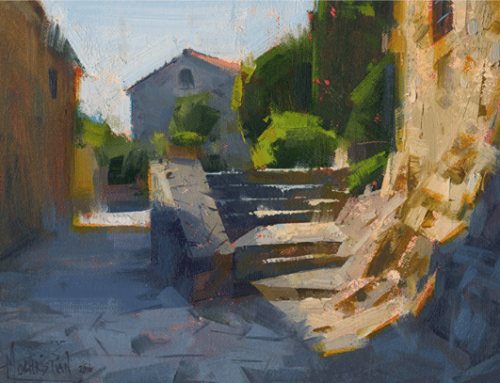John Everett Millais (1829-1896) was a British painter who belonged to Victorian England’s Pre-Raphaelite Brotherhood (or PRB, as they signed their works, not to be confused with PBR 🙂
The PRB consisted of seven men (they were all men, and I’m sorry to say a number of them behaved rather poorly with each others’ wives and girlfriends, whom they all used as models for their paintings’ mythical female figures, which is one of the reasons many of their paintings look very similar). The style spread more generally, but Millais was one of the original seven founders.
He would have considered his landscape Chill October a minor painting – it has none of the grand scale and gravity of the typical Pre-Raphaelite scenes of women from Arthurian legend and classical literature.
Chill October might be called “totalistic” because even though Millais was not a Tonalist, this painting evokes autumn and its mood through light, shadow, and subtle color-tones that evoke emotion as they suffuse the canvas.
The landscape’s pale sky lowers over the bank of a river awash with ochre reflections, where an isolated island of shadowy trees looms, stranded in the utterly still water. The dark shadows inhabiting the carpet of golden reeds in the foreground form a barrier to entry, keeping the viewer on the outside looking in, and thereby increasing that lonely, introspective feeling that sometimes creeps over us on autumn walks and rambles.
A different and more famous painting of fall is Millais’ melancholy Autumn Leaves, exhibited at the Royal Academy in 1856. This painting drew praise from famous art critic and aesthetician John Ruskin, who famously called it (rightly or wrongly) “the first instance of a perfectly painted twilight.” (What? Had he forgotten Turner??)
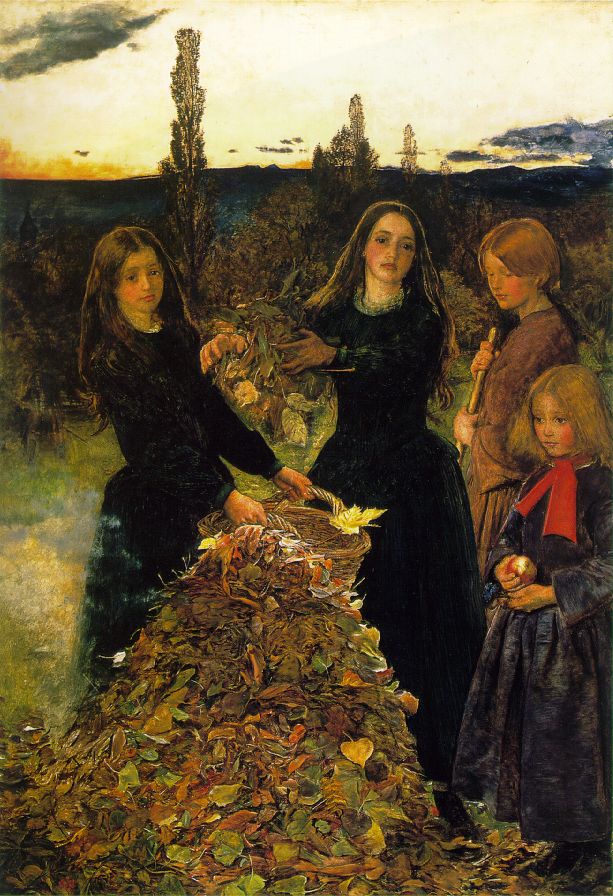
John Millais, Autumn Leaves, oil, H 104.3 x W 74 cm
The way the young women of Autumn Leaves are dressed suggests either mourning or simply clothes such as young girls would have worn to church, either of which builds in a strongly reverent, almost mysterious mood. After a positive review from a critic, Millais wrote to the man that he had “intended the picture to awaken by its solemnity the deepest religious reflection. I chose the subject of burning leaves as most calculated to produce this feeling.”
Alternately, the pure landscape of Chill October has a lighter touch, yet it also evokes the “solemnity” of the landscape. As October closes in on the remnants of summer, wind rips through and bends the amber grasses and the trees to the left, pointing toward the water and a distant hill beyond.
Millais adds certain details that cushion the bleakness of the scene. The clouds radiate a gentle translucent light that is answered by the water’s golden glow. A scattering of birds soars over, hinting at the openness and freedom that nature offers even on its darker days.
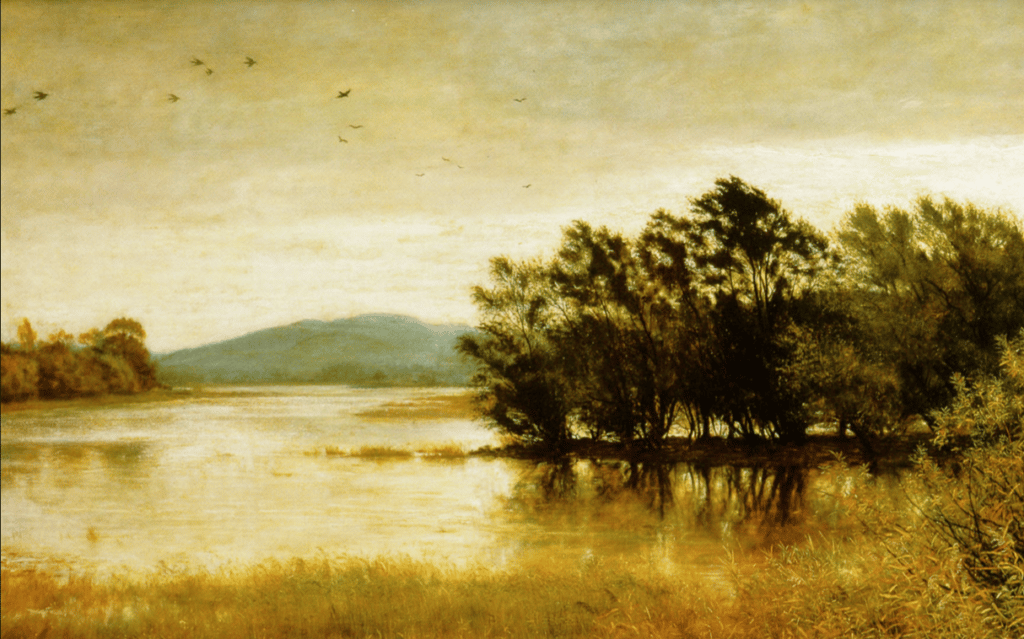
DETAIL, Millais’s Chill October
Vincent van Gogh was moved by this painting’s beauty to mention having seen it in a letter to his bother Theo. It’s said that once when he met Millais on the street, he was too nervous to introduce himself. Little wonder that van Gogh, himself an artist devoted to the embodiment of human feeling in nature, would fall for Chill October, which, like Autumn leaves, is so rich with human expression and mood.
Ukrainian Artist Vera Kavuera Offers a Flower for Your Thoughts
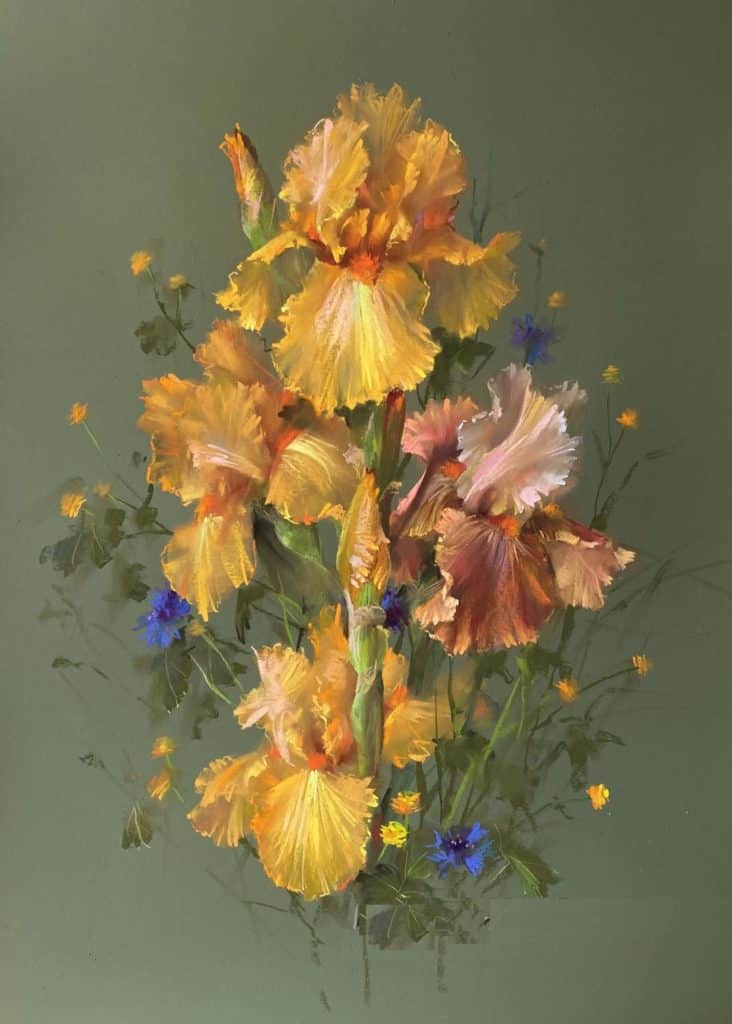
Vera Kavura, Golden Irises, Soft pastels on Colourfix smooth paper
Pastel on paper.
Ukrainian pastel artist Vera Kavura paints flowers, but like the artists we’ve discussed above, it’s the mood of them, the human feeling in natural imagery that she says she is chasing. She explains her philosophy and her method in her teaching video Realistic Flowers in Pastel.
“My flowers seem to be very realistic but it is the pastel, the form, and the color, which allows me to create the character and spirit of the flowers,” she says. “To make smile a viewer and feel a sweet mood – this is my mission in the drawing, by means of flashing the real miracle of nature – flowers.”
Real miracles indeed.
In the paint,
Chris

